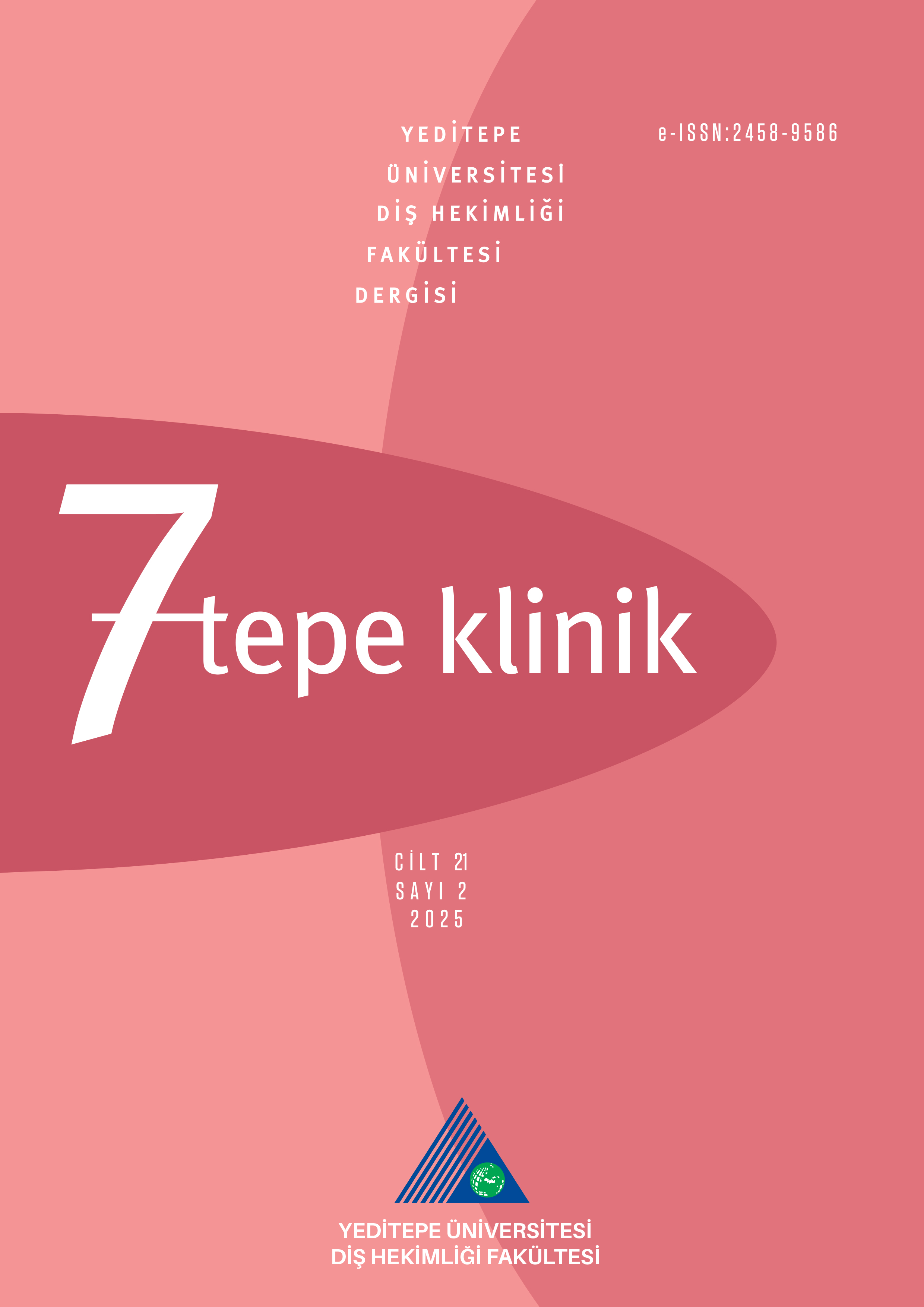Odontojenik Keratokistlerin Radyografik Özelliklerinin Konik Işınlı Bilgisayarlı Tomografi ile Retrospektif Olarak Değerlendirilmesi
Mehmet Oğuz Borahan1, Yeliz Güneş1, Pınar Yener2, Gühan Dergin21Marmara Üniversitesi Diş Hekimliği Fakültesi, Ağız, Diş ve Çene Radyolojisi Anabilim Dalı, İstanbul2Marmara Üniversitesi Diş Hekimliği Fakültesi, Ağız, Diş ve Çene Cerrahisi Anabilim Dalı, İstanbul
GİRİŞ ve AMAÇ: Bu çalışmanın amacı, odontojenik keratokistlerin (OKK) radyolojik özelliklerinin konik ışınlı bilgisayarlı tomografi (KIBT) kullanılarak değerlendirilmesidir.
YÖNTEM ve GEREÇLER: Histopatolojik olarak OKK tanısı konmuş 18 hastanın 20 lezyonuna ait KIBT görüntüleri retrospektif olarak Marmara Üniversitesi, Diş Hekimliği Fakültesinde değerlendirildi. KIBT görüntüleri, lezyonların lokasyonu, şekli, septa varlığı, sınır şekli, kök rezorpsiyonu, gömülü diş varlığı ve ekspansiyon şekline göre değerlendirildi. Veriler, Statistical Package for Social Sciences versiyon 22 kullanılarak analiz edildi ve p değeri 0,05ten küçük olan sonuçlar istatistiksel olarak anlamlı kabul edildi.
BULGULAR: OKKler, ortalama yaşı 34,2 olan ve yaşları 13 ile 65 arasında değişen, 11 erkek ve 7 kadın hastada tespit edildi. OKKlerin %70i mandibula posterior bölgede görülürken, yalnızca %5i maksilla posterior bölgede bulundu. Lezyonların çoğunluğu (%60) uniloküler, düzgün sınırlı (%60), gömülü diş ile birlikte (%55), fusiform şekilli (%70) ve septasızdı (%55) Lezyonların yalnızca %15inin kök rezorpsiyonuna neden olduğu görüldü. OKKlerin şekli ile lokasyonu arasında istatistiksel olarak anlamlı bir fark bulunmadı (p>0,05), ayrıca gömülü diş varlığı ile kök rezorpsiyonu arasında da istatistiksel olarak anlamlı bir fark bulunmadı (p>0,05).
TARTIŞMA ve SONUÇ: OKKler değişken radyolojik özellikler gösterebilir. Kesin tanı için histopatolojik değerlendirmenin yanı sıra, OKKlerin değerlendirilmesinde, KIBT görüntülerinin farklı radyolojik bulgular gösterebileceği göz önünde bulundurulmalıdır.
Retrospective Evaluation of Radiographic Features of Odontogenic Keratocysts with Cone Beam Computed Tomography
Mehmet Oğuz Borahan1, Yeliz Güneş1, Pınar Yener2, Gühan Dergin21Department of Dentomaxillofacial Radiology, Marmara University, Faculty of Dentistry, İstanbul, Türkiye2Department of Oral & Maxilofacial Surgery, Marmara University, Faculty of Dentistry, İstanbul, Türkiye
INTRODUCTION: The purpose of this study was to evaluate the radiological characteristics of odontogenic keratocyst (OKC) using cone-beam computed tomography (CBCT).
METHODS: CBCT images of 20 lesions of 18 patients diagnosed with OKC histopathologically were evaluated retrospectively at Marmara University, Faculty of Dentistry. CBCT images were analyzed according to location, shape, presence of septa, border shape, root resorption, presence of impacted teeth and expansion shape. The data were analyzed using the Statistical Package for Social Sciences version 22 and p values less than 0.05 were considered statistically significant.
RESULTS: OKCs were detected in 11 male and 7 female patients, aged between 13 and 65, with an average age of 34.2. Among OKCs 70% were localized in the mandible posterior and only 5% were found in the maxilla posterior. Most of the lesions were unilocular (60%), smooth-bordered (60%), with an impacted tooth (55%), fusiform-shaped (70%) and without septa (55%). Only 15% of the lesions caused root resorption. There was no statistically significant difference between the shape and location of OKCs (p>0.05), there was no statistically significant difference also between the presence of impacted teeth and root resorption (p>0.05).
DISCUSSION AND CONCLUSION: OKCs may show variable radiological features. In the evaluation of OKCs, in addition to histopathological examination for a definitive diagnosis, it should be taken into consideration that CBCT images may also show different radiological findings together.
Makale Dili: Türkçe



